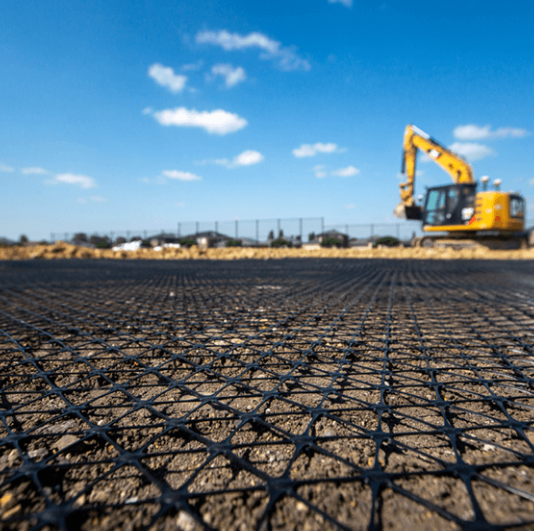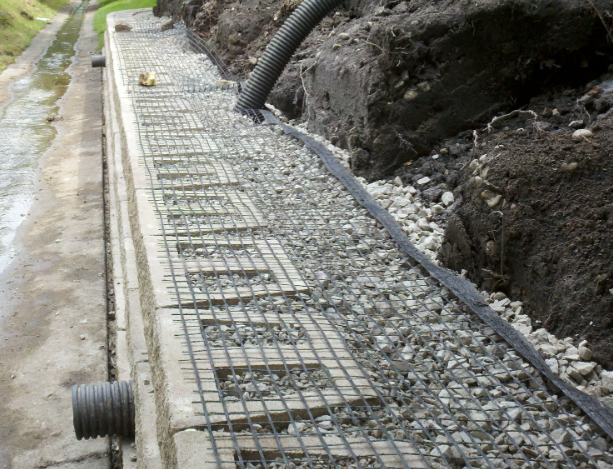- Understanding the Role of Geomembrane Liners in Waste Management
- Innovations in Geomembrane Liners for Water Management
- Geomembrane Liners: A Comprehensive Guide
- The Future of Geomembrane Liners in Civil Engineering
- Geomembrane Liners: Enhancing Landfill Stability
Manager:
WhatsApp:+86 177 0135 2670
Tel:+86 177 0135 2670
Email:marketing@okorder.com
Address:3rd Floor, No.2 Building, No.1 Sanlihe Road
What is an Alternative to Geogrids?
Geogrids are widely used in construction and civil engineering for soil reinforcement and stabilization. However, there are various alternatives to geogrids that can also effectively address the same challenges. These alternatives may be preferred due to their unique characteristics, cost-effectiveness, or suitability for specific applications. This article explores the different alternatives to geogrids, their advantages, disadvantages, and specific applications.

Alternatives to Geogrids
Several materials and techniques can serve as alternatives to geogrids. These include Geotextiles, geomembranes, cellular confinement systems, natural fiber mats, and soil nailing.
Geotextiles
Characteristics
Geotextiles are permeable fabrics made from synthetic or natural fibers. They come in woven, non-woven, and knitted forms and are used primarily for separation, filtration, drainage, and reinforcement purposes.
Advantages
1. Versatility: Geotextiles can be used in a wide range of applications, from road construction to erosion control.
2. Cost-Effective: They are generally less expensive than geogrids and offer good performance for many soil reinforcement tasks.
3. Ease of Installation: Geotextiles are lightweight and easy to handle, making them convenient to install.
Disadvantages
1. Strength Limitations: While geotextiles provide reinforcement, their tensile strength may not be as high as that of geogrids.
2. Durability: Exposure to UV light and chemical contaminants can degrade some types of geotextiles over time.
Applications
Geotextiles are used in road construction, retaining walls, embankments, and erosion control projects. They are particularly useful for separating different layers of soil and preventing the mixing of materials.
Geomembranes
Characteristics
Geomembranes are impermeable liners made from polymeric materials such as polyethylene, PVC, or EPDM. They are primarily used to control fluid movement in a project.
Advantages
1. Impermeability: Geomembranes provide an excellent barrier against water, gases, and other liquids.
2. Chemical Resistance: They are highly resistant to chemicals and are often used in containment applications.
Disadvantages
1. Limited Reinforcement Capability: Geomembranes are not typically used for soil reinforcement as they do not provide significant tensile strength.
2. Cost: High-quality geomembranes can be expensive, particularly for large-scale applications.
Applications
Geomembranes are commonly used in landfills, pond liners, and any application where fluid containment is critical. They can also be combined with other geosynthetics for added functionality.
Cellular Confinement Systems
Characteristics
Cellular confinement systems (CCS), also known as geocells, are three-dimensional honeycomb-like structures made from high-density polyethylene (HDPE). They confine soil within their cells, providing enhanced load distribution and soil stabilization.
Advantages
1. Load Distribution: CCS effectively distribute loads over a wider area, reducing pressure on underlying soils.
2. Erosion Control: They are highly effective in preventing soil erosion on slopes and embankments.
3. Flexibility: CCS can adapt to a variety of terrains and are easy to install.
Disadvantages
1. Cost: Depending on the application, CCS can be more expensive than traditional geogrids.
2. Installation Complexity: Proper installation requires careful preparation and sometimes additional anchoring systems.
Applications
CCS are used in slope stabilization, retaining walls, and load support for roads and pavements. They are also effective in green infrastructure projects such as green roofs and vegetated retaining walls.
Natural Fiber Mats
Characteristics
Natural fiber mats are made from biodegradable materials such as coir (coconut fiber), jute, and straw. These mats are used for temporary soil stabilization and erosion control.
Advantages
1. Eco-Friendly: Being biodegradable, natural fiber mats are environmentally friendly and contribute to sustainable construction practices.
2. Cost-Effective: They are generally less expensive compared to synthetic alternatives.
Disadvantages
1. Durability: Natural fiber mats degrade over time and may not be suitable for long-term applications.
2. Strength: They provide limited reinforcement compared to geogrids and other synthetic materials.
Applications
Natural fiber mats are typically used for temporary erosion control, especially in areas where vegetation is expected to take over long-term stabilization, such as in landscaping, riverbanks, and construction sites.
Soil Nailing
Characteristics
Soil nailing is a technique used to reinforce and stabilize slopes and excavations. It involves inserting steel bars (nails) into a slope or excavation and grouting them in place.
Advantages
1. High Strength: Soil nailing provides substantial reinforcement and can handle significant loads.
2. Versatility: It can be used in a variety of soil types and is effective in both temporary and permanent applications.
Disadvantages
1. Cost: Soil nailing can be more expensive than geogrid solutions, particularly for large projects.
2. Complexity: The installation process is complex and requires specialized equipment and skilled labor.
Applications
Soil nailing is used for stabilizing retaining walls, slopes, and excavations. It is also employed in tunneling and to support structures during construction.
Comparison of Alternatives
Cost-Effectiveness
- Geotextiles and natural fiber mats are generally the most cost-effective alternatives.
- Geomembranes and cellular confinement systems can be more expensive but offer specific benefits that may justify the cost.
- Soil nailing is typically the most expensive option but provides the highest strength and stability.
Installation and Handling
- Geotextiles and natural fiber mats are the easiest to handle and install.
- Cellular confinement systems and geomembranes require more preparation and precise installation techniques.
- Soil nailing involves the most complex installation process.
Durability and Longevity
- Geomembranes and cellular confinement systems offer excellent durability and longevity.
- Geotextiles and natural fiber mats are less durable, with natural fiber mats being the least durable.
- Soil nailing provides long-term reinforcement but may require maintenance over time.
Environmental Impact
- Natural fiber mats are the most environmentally friendly due to their biodegradability.
- Geotextiles and geomembranes have varying degrees of environmental impact depending on the materials used.
- Cellular confinement systems and soil nailing can have significant impacts due to the use of synthetic materials and the need for excavation and drilling.

Conclusion
Choosing an alternative to geogrids depends on the specific requirements of the project, including cost, ease of installation, durability, and environmental considerations. Geotextiles, geomembranes, cellular confinement systems, natural fiber mats, and soil nailing each offer unique advantages and can be effectively used in various applications. Understanding the characteristics and functions of these alternatives can help engineers and project managers make informed decisions to achieve the desired outcomes in soil reinforcement and stabilization projects.
- Previous:What type of fabric is geotextile?
- Next:The Difference Between Geomembrane and Plastic Film
-
2024-05-27What is an Alternative to Geogrids?






